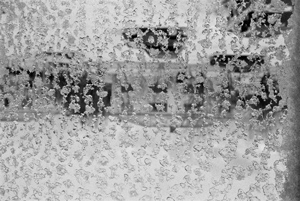so bumps in the road expand into mole-hills into fuckin’ Everests. ready to chuck the whole thing.
with all my travels, and participating in systems that are localized I have noted how the local participants consider that their (social institutional) system–whatever it might be—is correct, transparent, and functional (and, is optimal/optimized). In every conversation I have had with foreign graduate students in Australia’s “tertiary education” (aka – “higher ed”) system, the chief topic of conversation is how black-box the system actually is, and how locals are able to function in it much easier, setting up knowledge-tracks to quick success. Prior knowledge and simply being in the system over time (or ‘from the beginning’) is a tremendous advantage in such localized systems. Entering in the system as I have done, an outside outsider is a distinct disadvantage, and at this point, I wouldn’t recommend it to anyone. A ‘semester abroad’ to UNSW or such might be good fun, but otherwise I’ve not seen much to recommend pursuing a graduate degree. I have heard in engineering as well as humanities courses that there are so many foreign students with poor ESL skills, that there is no real possibility for classroom dialogue of any but the most basic level. This wasn’t a problem in the two courses I’ve taught, though I can understand it is definitely possible, given that 18% of all tertiary students are coming from overseas. That’s 375K students as of 2005! Four years on, the number is 629K as there has been a major push by the government to expand this lucrative source of foreign exchange. It’s the third largest ‘export’ industry, generating AUD 18 billion in 2009. (See this report and this one for reference.)
I was told that there would be no more ‘casual’ teaching positions available for me until at least 2013, at which point I wouldn’t be in the country anyway. The significant contraction comes on the heels of the expansion: “a combination of factors in the past 18 months has put the international education sector under pressure. . . . Preliminary evidence suggests that the entire sector could see a decline in enrolments of between 15 to 30% in the near future.” This would cause a loss of tens of thousands of FTE (Full-time Equivalent) teaching positions (according to the rough correlation of every 2 overseas students supports one FTE). Tough times coming for tertiary ed in Oz!
Though this is only a side-show as far as I am concerned. Actually I don’t care a rap about it! The primary issue is the interpretation gap between what I pick up (from what I am told) and what is considered ‘correct’ or ‘acceptable’ within that tertiary education system in Australia as I (perhaps) continue my pursuit of the Ph.D. The gap seems to have expanded to consume my entire thesis which is shocking. Or maybe not — the meta-structural issues that I alluded to above are no surprise at all. They are the rule rather than the exception everywhere that I’ve participated in a process deeply enough to touch them. Most people are local. That’s ‘normal.’ Sure, they travel, but not to the extent where they run into these issues. And to locals, the problems are completely invisible: it’s the fish and water syndrome. Surfacing any critique usually causes some affront — even a passing note as to “how it’s done elsewhere.” (Being a ‘Yank’ in Australia is to be even more acutely suspect of an ulterior motive with any observation — I noticed that right off during several awkward instances.)
The only times I’ve really been ‘local’ myself are during the occasional sojourns in Colorado over the years — ten years resident over the past 35. Though the residencies have been mostly brief themselves, and all the locals I know here expect me to be around only temporarily.
Local versus distal provenance is a strong determinant in social power structures. Close connection to the sources of system-wide protocols enhances access to energy sources and consequently, enhances survivability.

